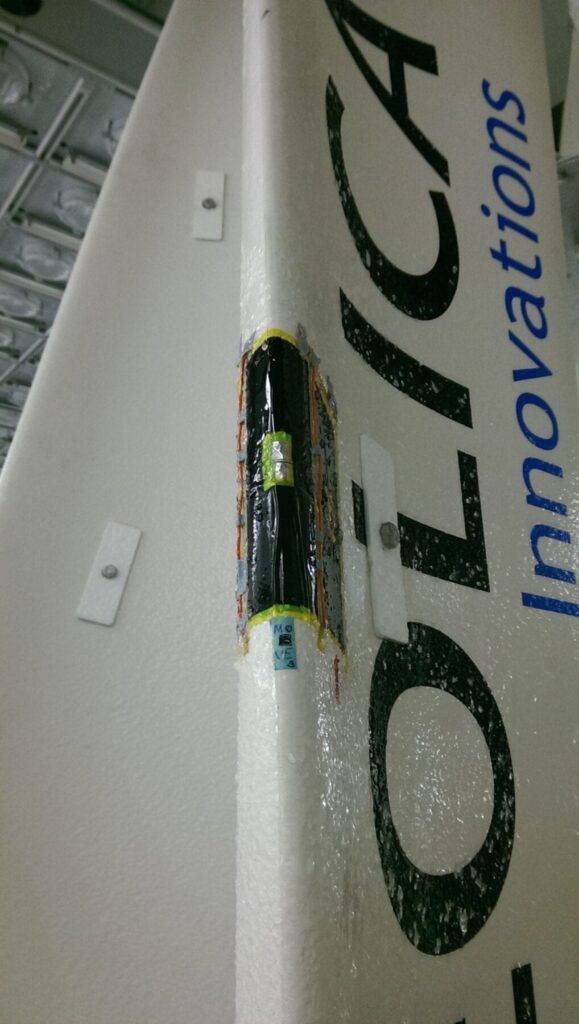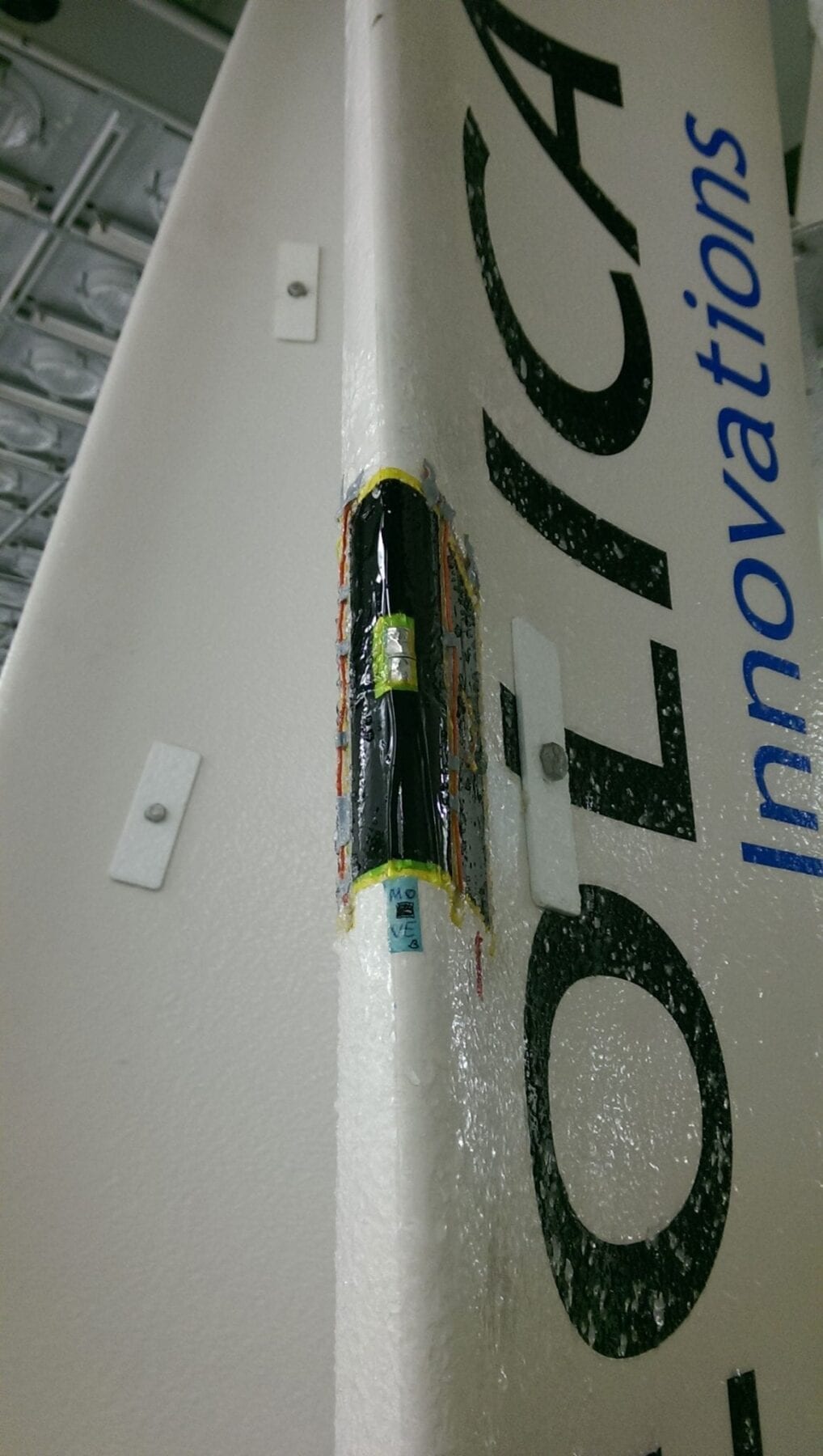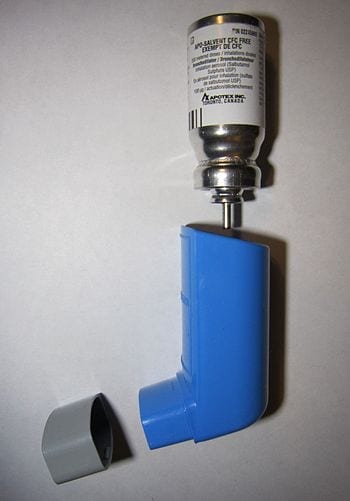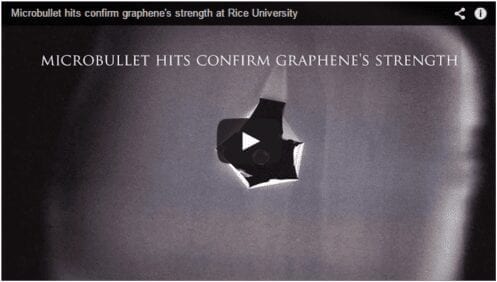
via Fraunhofer IPA
In very cold climate zones, the wind can blow with tremendous force. But wind turbines have rarely been built in these regions up to now. The risk of ice formation on the rotor blades is just too high. But now, an energy-efficient heating system frees these turbines from the ice in a matter of seconds. It is only switched on when water freezes.
A number of companies shy away from building wind-powered systems in northern regions, even though the wind blows with great power there. To begin with, weather conditions represent a Herculean challenge: Aerodynamic properties deteriorate when an ice layer forms on the rotor blades as temperatures drop to the below-zero range under freezing storm conditions. The turbines produce less energy. The inexorable redistribution of the loads disturbs the overall balance, which furthermore means the blades might breakdown faster. On top of this is the safety risk associated with icicles breaking off. When the risk of ice formation arises, the operators will immediately shut down the systems. Annual power production becomes markedly diminished – the ice accumulations cause power losses ranging anywhere from 14 to 20 percent. Despite the vast potential, wind turbines are consequently much less likely to be constructed in cold climate regions. This is where the EU’s “Windheat Project” steps in: Working in joint collaboration with six corporations from four EU states, researchers at the Fraunhofer Institute for Manufacturing Engineering and Automation IPA in Stuttgart are developing an energy-efficient ice detection and anti-icing (or de-icing) system for small wind turbine power generators. Periods of weather-related downtimes should be avoided this way.
Carbon nanotube coating causes the ice to melt
Existing anti-icing systems are energy-intensive, since they have to heat up the entire rotor blade – regardless of whether entire blade is actually affected. But with “Windheat,” the project partners are taking a different route: This rotor blade is divided in to a variety of zones that were each finished with a carbon nanotube (CNT) coating. Then, a separate ice detector is integrated into each individual CNT layer. “Our carbon nanotube coating only heats those zones that are actually iced up. These are the edges of the rotor blade, first and foremost,” says Anne Gerten, scientist at IPA.
These tiny, sensitive probes are constantly measuring temperature and humidity at the surface, react to the slightest fluctuations, and detect when water freezes. If ice is detected, then, in a matter of seconds, the detectors switch on the heat element that supplies the corresponding CNT layer. Once the ice has melted, the heat is automatically switched off. “With the combination made out of CNT coating and sensors, we can target and heat the iced-up zones and essentially, only when it is actually required,” adds Gerten. The goal of the project is to increase energy efficiency by at least 18 percent, using this de-icing strategy.
The Latest on: Smart anti-icing system
[google_news title=”” keyword=”Smart anti-icing system” num_posts=”10″ blurb_length=”0″ show_thumb=”left”]
via Google News
The Latest on: Smart anti-icing system
- Q1 2024 Boeing Co Earnings Callon April 24, 2024 at 11:57 pm
Sheila Karin Kahyaoglu; Equity Analyst; Jefferies LLC, Research Division ...
- The best Amazon deals to shop this week: Save up to 90% on appliances, gardening essentials and moreon April 24, 2024 at 8:37 am
A few of our faves? An air purifier marked down by $720 and a vertical garden on sale for $34, plus sweet gift ideas for Mom.
- Boeing (BA) Q1 2024 Earnings Call Transcripton April 24, 2024 at 7:45 am
Good day, everyone, and welcome to The Boeing Company's first-quarter 2024 earnings conference call. Today's call is being recorded. The management discussion and the slide presentation plus the ...
- 2024 Ultraviolette F77 facelift launched at Rs 2.99 lakh — Is it worth?on April 24, 2024 at 5:44 am
Peak single-charge range of the Ultraviolette F77 Mach 2 has improved by 16 km, although battery capacity remains the same.
- Best cordless vacuum cleaners for dust-free days 2024on April 18, 2024 at 11:00 am
Best cordless vacuum cleaners for dust-free days 2024 - Self-proclaimed domestic godless, Stuart Pritchard, serves up a dectet clean sweep of cordless ...
- Ford Unveils Smart Wheel Security System to Stop Thieves in Their Trackson April 15, 2024 at 6:00 pm
In a win for both security and safety, Ford's new patent shows how tech can be used to fight crime and keep drivers on the road. Keep scrolling for more details.
via Bing News











